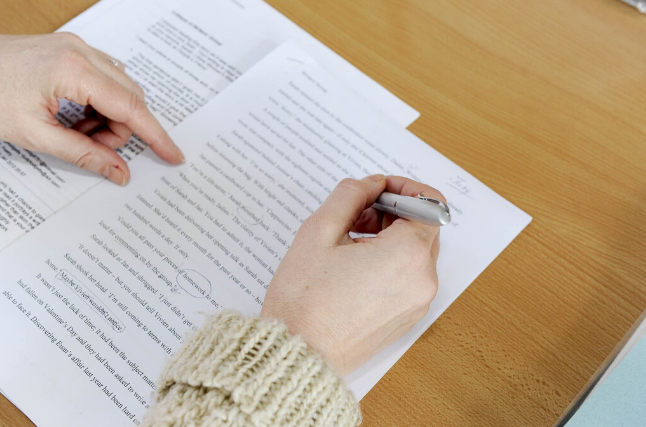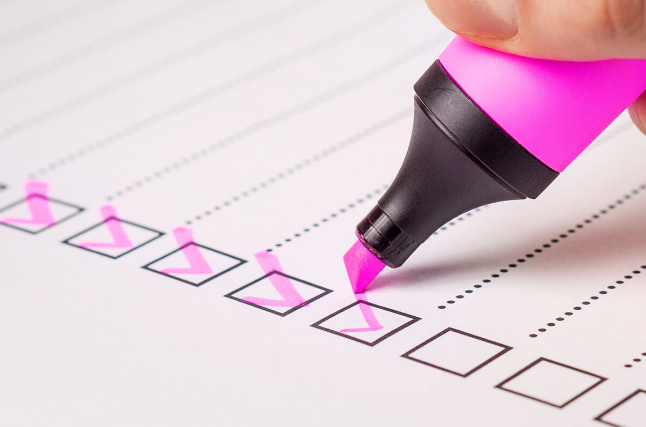
Whether you write fiction or nonfiction, novels or essays, your work can benefit from self-editing. The more I edit my work, the more I notice distinct errors, but I’m also able to streamline my process by adding these errors to my self-editing checklist as I go.
My checklist started because of reading books and taking courses about writing. I read about common errors and noted I made the same mistakes in my writing, so I created a checklist. Here are some tips for creating your own self-editing checklist.
Be Objective
The first and one of the hardest steps in self-editing is getting to a place of objectivity. It's true that we are our own worst critics, but because you know what you want to say (and maybe see a visual of the story in your head), errors might not stand out as easily as they would if you were editing someone else’s work.
Let the Manuscript Rest
A common piece of advice for gaining objectivity with your own work is setting the manuscript aside. I've heard some people say you need to put the manuscript away for a minimum of two months and others have said two weeks. This is something you will need to test for yourself and see when you've gained an appropriate amount of objectivity.
But what if you don't have time to let your manuscript rest? Maybe you're on a tight deadline and need to get the manuscript to your editor as soon as possible. Luckily, there are some other tricks to help you gain objectivity when self-editing.
Change the Font
It's amazing the difference a font change can make. When I first heard this piece of advice, I was skeptical. But once I tried it, I found it valuable. It might take some experimenting for you to figure out what font is best for you. Several writers I know use the Comic Sans font. I like Courier because it reminds me of a typewriter.
On a PC, to change the font in most word processing programs hit the “Ctrl” (control) key and the letter “A” to select the full text. Then choose a different font from the font menu. For a Mac, use “Command” and “A” to select all.
Read on a Different Device
If you've written your manuscript on a computer, try printing it out for a little objectivity. You can also convert your file so you can read it on an e-reader. Most e-readers will accept PDF files, or you can use a free program like Calibre to convert to an EPUB or Mobi file.
A quick Google search will tell you how to load the file on your e-reader device.
Start with the Big Picture
Now that you gained some objectivity, it's time to edit your work. I like to start my self-editing by looking at big picture things like story and characters. The first time I read my work once it's complete, I try to read all the way through in one session, so I can get a good feel for the pacing and flow of the story.
It's hard to ignore typos, so I note those, but I try not to get too picky at this point. What I'm looking for in this first read-through is if things make sense. Do I have a character doing something that doesn’t fit with their personality? Is the shy girl yelling at the top of her lungs for no reason?
I like to start with these big picture things, because I may have a lot of rewriting to do. I don't want to correct sentences and words only to discover that I end up deleting those scenes. The things on my self-editing checklist at this point are questions.
For each scene, I ask:
- What purpose does this scene serve in the overall story?
- Is my principal character getting closer to their goal or being hindered by something?
- Are readers learning more about what the main character wants or needs? Are they learning more about the secondary characters?
Once I've got my characters doing things that fit with their personality, motivation, and goals and my plot making sense, I get pickier. Here's where my checklist comes in handy.
Get Picky
The picky things are things I might forget if I didn't have a checklist. The examples that follow are from my self-editing checklist. I’ve collected them over time from various sources.
Eliminate Unnecessary Words
Whether you're writing fiction or nonfiction, your writing is more effective when you write concisely. One way of doing this is eliminating unnecessary words that clutter the page.
I’ll never forget my linguistics professor’s obsession with the overuse of the word “that”. He’d often go into rants about how the word is almost never required. He called it a “shunt” word. Part of the definition of shunt is “to get rid of.” Ever since that class, the first word I look to eliminate from my writing is “that.”
Other common unnecessary words include:
- Really
- Very
- Just
- Even
- Probably
- Might
Find more examples of filler and unnecessary words (and how to fix them) in this article from Wordvice.
Watch for Writer Ticks
Writer ticks are nasty habits you repeat. For me, these are things like using toward and towards in the same piece of work instead of picking one and sticking with it. I also tend to use that when I mean who. For example, I'll write, “The man that drove the blue Dodge blocked me in” rather than “The man who drove the blue dodge blocked me in.”
I also use distancing verbs such as saw, heard, realized, noticed, wondered, etc. When writing from the point of view of your main character, these aren’t necessary. Rather than writing, “Martin heard a door slam,” you can write, “A door slammed.” This helps the reader stay in your character’s head instead of reminding them you, the author, are tagging along on their reader journey.
The more you write, the more you'll notice your own ticks. I recommend adding them to your self-editing checklist so you remember to watch for them in your final work.

Last Steps
Once you’ve fixed your big-picture issues and tackled the picky things you've listed on your self-editing checklist, it's time for some last steps to polish your writing even further.
Run ProWritingAid Reports
I love running ProWritingAid reports as a last check to make sure I have missed nothing. First, I run the Summary Report. Then, depending on the results, I run the Style Checker and the Grammar and Spelling Reports. If I’ve scored low in other areas on the Summary Report, I will run those individual reports as well.
Read Out Loud
The very last thing I do before finalizing my work is read it out loud. It's amazing how many things I catch by doing this.
Creating and Using Your Self-Editing Checklist
You can use anything you like to create your self-editing checklist. I recommend a format you will use. For me, that means remembering where it’s stored. Since I use Google Docs to write, Google Keep makes the most sense for my checklist.
Google Keep is a digital sticky note system. The list function makes it easy to add and check off items, and I can open it directly from Google Docs, so I don’t have to leave my work in progress to work through my checklist. Once I’ve checked off everything for my current WIP, I can uncheck items to start fresh for the next project.
Takeaways
Whether working on an essay for school, polishing a manuscript to submit to an agent, or writing a blog post for your website, it's always important to showcase your best to work. You can do that by creating a self-editing checklist, so no steps in your editing process are missed.

